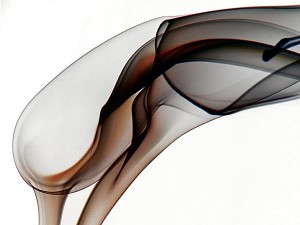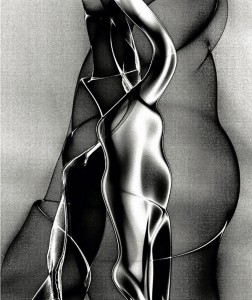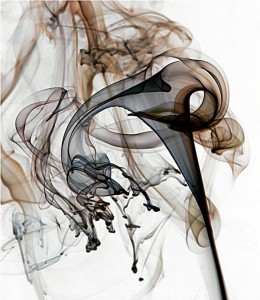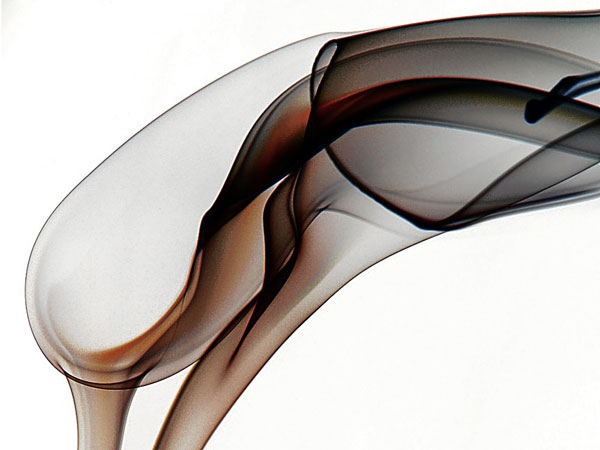
They look like wispy curls or silhouettes of cloud formations with no beginning or end. Viewers keep wondering what the photographs are all about.
Photographer Tom Epperson doesn’t want to be literal about his subject, which evokes a certain mystery. He leaves it to people to interpret the images.
His latest works are on view at the Coffee Bean & Tea Leaf, in Greenbelt 5 as part of its coffee-and-arts program. The series investigates the qualities of smoke brought about by chemical combustion, not by fire.
Unlike the common smoke from a cigarette which quickly rises and disappears, chemically induced smoke is dense and creates billowy cloud formations, broad sweeps and arcs before they disperse.
The images were photographed in a room where all windows and air-conditioning units were shut. He utilized a cable release to enable him to trigger the camera without moving from his position, a single light source and two chemicals that reacted to create the smoke.
“If you breathe too hard, the smoke would quickly dissipate,” he says. “I don’t know where the smoke starts from. It just comes and gets twisted around. You don’t see these little things happening. If you miss it, it’s gone.”
Clueless
Epperson says the method reminds him of photographing in film wherein the photographer has no clue about the outcome until after the processing. “While shooting, you have no idea if it will hit the mark. By the time something is happening, it’s already gone.”

The images could suggest anything from dye on water to the abstract silhouette of a calla lily. To the naked eye, the colors may seem only white or gray, but the camera sees more colors such as deep purple and midnight-blue. For effect, the color profiles of smoke can be converted from cool to warm tones.
Smoke is not the first unstable and ephemeral subject Epperson has used. And, it’s not the first time he makes us appreciate the beauty of things that we often take for granted.
He is working on car oil deposits on the road. Although these greasy residues are imperceptible to most people, Epperson saw how they could make interesting subjects. “It’s surreal. When oil spills on the road after the rain, there’s a rainbow of colors.”
Epperson has also explored the qualities of ice, capturing the bubbles, the frost and the melting water.
A trip to Mongolia with its objects frozen in lakes inspired him to produce a series of unusual subjects such as marbles, sapsap on Ziplock bags, and a cock ring submerged in ice. The challenge was to keep the subject matter in place as the ice slowly liquefied.
These stirring images were exhibited at the Tyler Rollins Gallery in New York.
Beyond art
Beyond art, Epperson has been known for his mettle in architecture, landscape, fashion and portraiture.
His landmark exhibit was at Le Soufflé in the early ’90s. The photographs captured the heart and soul of Philippine life, such as a boat docking on the silent waters on Cuyo Island; flowers surrounding a picture of the Sto. Niño; a man sitting against the sun-dappled wall in Batanes.

In 2005, Epperson did the honors of holding the first photographic exhibit at the new Ayala Museum. It featured 55 portraits in their element.
He points out that most of his works hold a common denominator—using one light source whether the subject is a model or vapor. While most photographers favor several lights, Epperson believes one could accomplish more with a simple setup.
“I realize it’s not about the camera or how many lights. It’s how you communicate with the sitter. How much do they want to give of themselves.”
But for ephemeral subjects such as vapor and ice, it’s how much the photographer invests his time and patience to capture the fleeting subject at the right moment.














































